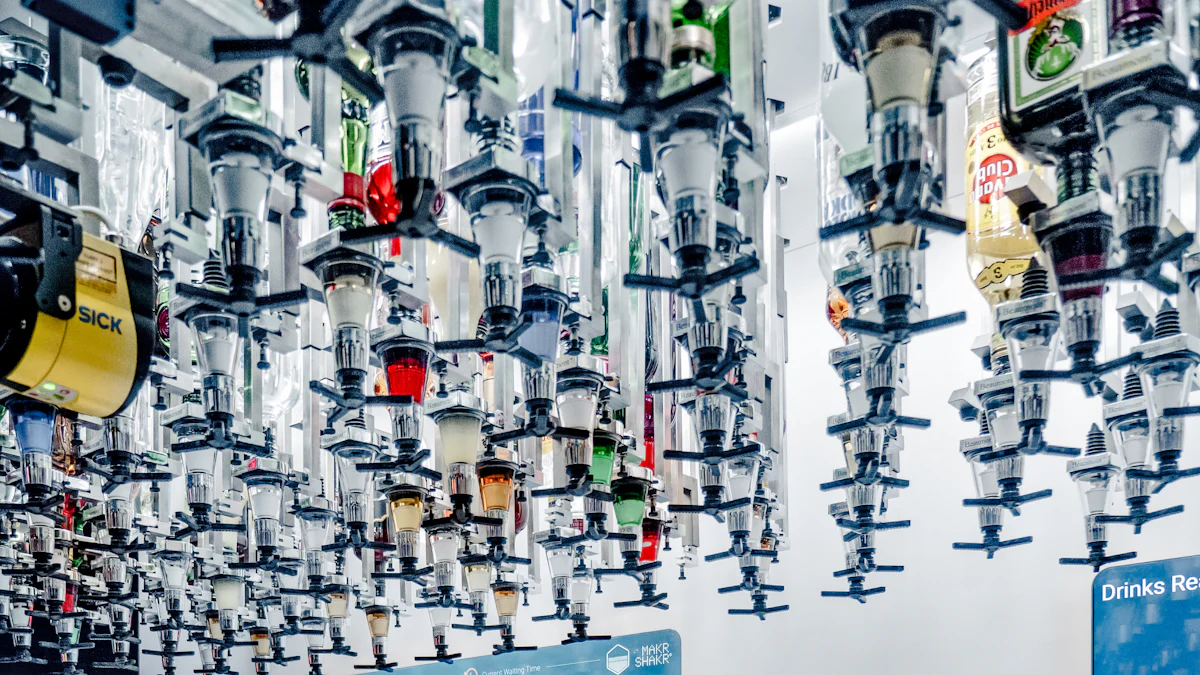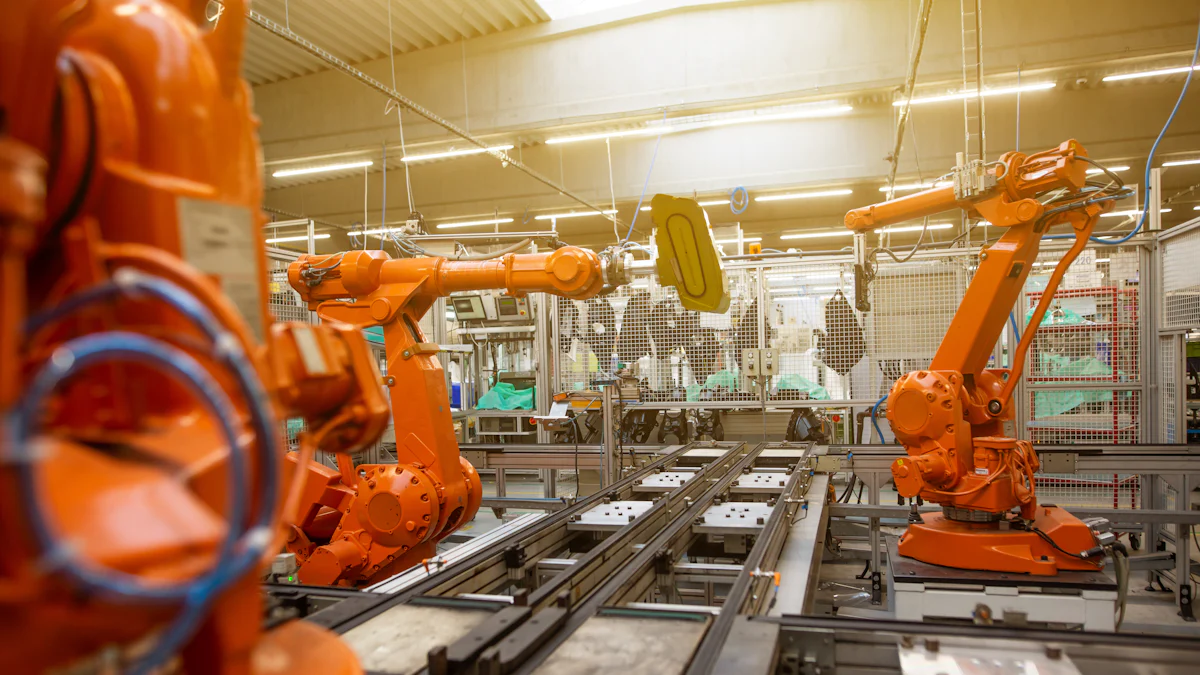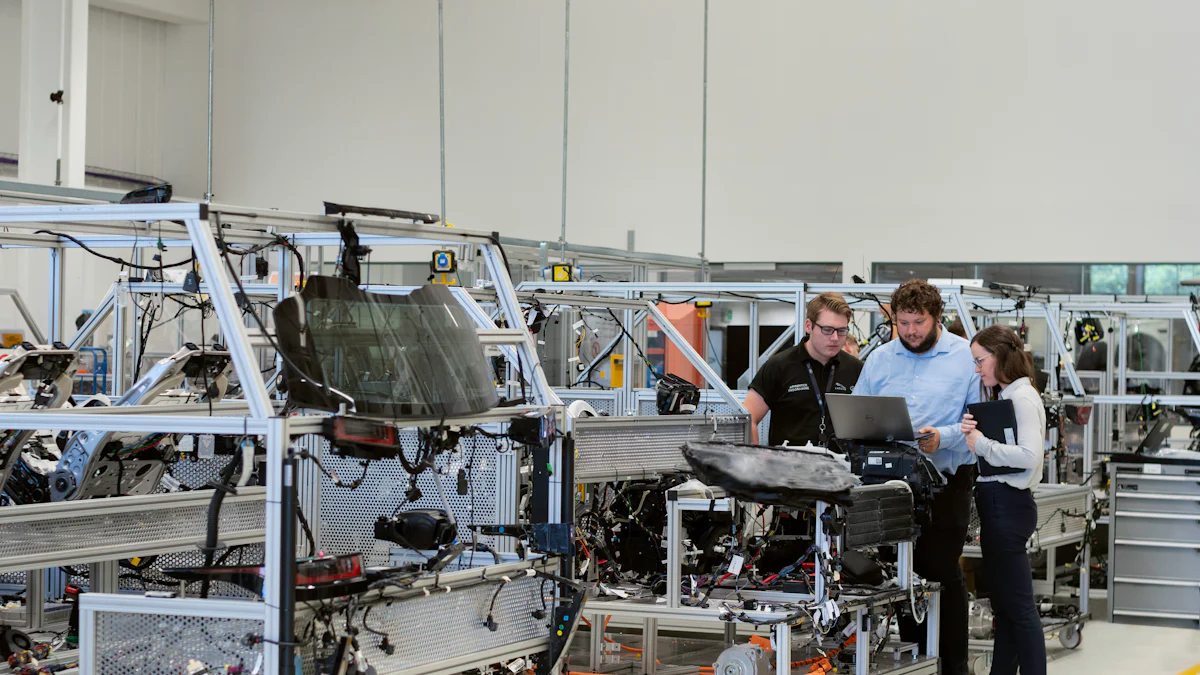Top Manufacturing Supply Chain Trends to Watch in 2025

The manufacturing supply chain in 2025 will undergo transformative changes driven by resilience, sustainability, and technology. Businesses must address challenges like rising logistics costs, fluctuating trade policies, and cybersecurity threats to remain competitive. Decentralized production and integrated automation will play pivotal roles in enhancing operational efficiency. Nearly all supply chain initiatives will rely on powerful data analytics to assess conditions and prioritize actions. Companies adopting advanced supply chain management strategies will balance cost, performance, and sustainability goals. As the manufacturing industry evolves, customer-centric supply chains and sustainable manufacturing practices will define success.
Supply Chain Resilience: Adapting to Uncertainties
The manufacturing supply chain in 2025 faces an unpredictable landscape shaped by global disruptions and evolving market demands. Supply chain resilience has become a critical focus for businesses aiming to navigate uncertainties effectively. Recent events, such as the COVID-19 pandemic and geopolitical tensions like the Russian invasion of Ukraine, have highlighted vulnerabilities in global supply chains. These disruptions caused congested ports, workforce shortages, and halted production, underscoring the need for robust strategies to mitigate risks.
Building Resilient Supply Chains with JUSDA
Diversifying suppliers to mitigate risks
Diversification of suppliers is a cornerstone of supply chain resilience. Relying on a single supplier or region increases vulnerability to disruptions. JUSDA supports businesses by leveraging its global network of over 155 service points and warehouses across regions like China, the United States, and Southeast Asia. This extensive reach enables companies to source materials from multiple locations, reducing dependency on any single supplier and ensuring continuity in operations.
Leveraging predictive analytics for disruption forecasting
Predictive analytics powered by artificial intelligence plays a pivotal role in forecasting potential disruptions. JUSDA’s JusLink platform integrates artificial intelligence and big data to provide real-time insights into supply chain operations. By analyzing historical data and current trends, businesses can anticipate challenges and proactively adjust their strategies. This capability enhances resilience and minimizes the impact of unforeseen events.
Risk Management Strategies for 2025
Implementing contingency plans for supply chain disruptions
Effective risk management requires comprehensive contingency plans. Businesses must prepare for emerging risks, including rising fuel costs, labor disruptions, and cybersecurity threats. JUSDA’s advanced tools, such as its Supply Chain Management Collaboration Platform, enable companies to simulate various scenarios and develop actionable plans. These measures ensure swift responses to disruptions, safeguarding supply chain continuity.
Strengthening partnerships with key suppliers
Strong partnerships with suppliers foster trust and collaboration, which are essential for resilience. Regular communication and transparent data sharing through platforms like JusLink enhance coordination across the supply chain. JUSDA’s value-added services, including inventory management and demand forecasting, further strengthen these relationships, enabling businesses to adapt to shifting market conditions and maintain operational efficiency.
As industrial manufacturing trends evolve, supply chain resilience will remain a top priority. By adopting innovative solutions and leveraging JUSDA’s expertise, businesses can build robust supply chains capable of withstanding uncertainties and driving a sustainable future.
Sustainable Manufacturing and ESG Initiatives

The Role of Sustainability in Supply Chain Trends
Reducing carbon footprints in manufacturing processes
Sustainability has become a cornerstone of modern supply chain trends, with manufacturers prioritizing efforts to reduce carbon footprints. Companies are adopting innovative practices to achieve this goal:
Switch to Renewable Energy Sources: Utilizing wind, solar, and hydropower significantly lowers emissions.
Optimize Manufacturing Processes: Lean manufacturing techniques minimize waste and improve efficiency.
Source Low-Carbon Materials: Recycled and sustainably sourced materials reduce environmental impact.
Implement Sustainable Logistics: Optimized transportation routes cut fuel consumption and emissions.
Adopt Digital and Industry 4.0 Technologies: IoT and AI identify inefficiencies in energy usage, driving operational resilience.
These measures not only align with sustainability goals but also enhance operational efficiency, a critical factor in the manufacturing supply chain in 2025.
Adopting circular economy principles
Circular economy principles are reshaping the manufacturing industry by promoting resource efficiency and waste reduction. Businesses are designing products for durability, repairability, and recyclability. This approach minimizes raw material demand and extends product lifecycles. JUSDA’s advanced warehousing solutions, which include value-added services like repacking and rework, support these principles by optimizing inventory management and reducing waste. Companies adopting circular practices gain a competitive edge while meeting consumer demand for sustainable products.
ESG Compliance and Reporting in Manufacturing
Meeting regulatory requirements for sustainability
Regulatory compliance remains a driving force behind sustainability initiatives. Governments worldwide are introducing stringent laws, such as the US Inflation Reduction Act and the German Supply Chain Due Diligence Act, to enforce ethical practices.
Driver | Description |
|---|---|
Regulatory Compliance | New regulations impose fines for non-compliance, pushing companies to act. |
Public Demand | Consumers increasingly demand ESG-aligned practices. |
Operational Efficiency | Sustainable practices reduce costs and waste. |
Competitive Advantage | Sustainability attracts customers and investors. |
Brand Reputation | Ethical practices enhance trust and reputation. |
Long-term Viability | Transparency fosters strategic partnerships and business longevity. |
Manufacturers must adapt to these evolving requirements to avoid penalties and maintain market relevance.
Technology Transforming the Manufacturing Supply Chain

AI and Machine Learning Integration
Automating inventory management with AI
Artificial intelligence is revolutionizing inventory management by automating repetitive tasks and improving accuracy. AI-powered systems analyze historical demand patterns to forecast inventory needs, reducing overstocking and shortages. Supply chain automation and digitization streamline operations, enabling businesses to allocate resources more efficiently. For example, AI tools can digitize documents and automate order processing, enhancing operational resilience. JUSDA’s advanced inventory management systems, such as eVMI, leverage AI to provide real-time tracking and control, ensuring transparency across the supply chain. These innovations empower businesses to meet customer demand while minimizing costs.
Optimizing logistics and transportation routes
AI and machine learning optimize logistics by analyzing real-time traffic data and predicting disruptions. Companies like Walmart have successfully implemented route optimization technology, eliminating inefficiencies and reducing emissions. Similarly, DHL uses AI-powered software to prioritize deliveries based on urgency and distance, achieving faster shipments and lower fuel consumption. JUSDA’s JusLink platform integrates AI to enhance route planning, ensuring timely deliveries and cost-effective operations. By adopting these emerging technologies in manufacturing, businesses can improve fleet management and contribute to sustainability goals.
Data-Driven Decision Making with JUSDA's Warehouse Solutions
Collecting and analyzing real-time data
Real-time data collection is critical for effective supply chain management. Advanced systems like JUSDA’s JusLink provide immediate insights into inventory levels, shipment statuses, and demand fluctuations. This capability allows businesses to respond quickly to disruptions, reroute shipments, and maintain optimal inventory levels. Enhanced inventory management reduces waste and improves operational efficiency, aligning with modern manufacturing trends. Real-time data also supports predictive analytics, enabling companies to anticipate challenges and make informed decisions.
Enhancing visibility across the supply chain
Visibility is a cornerstone of supply chain optimization. JUSDA’s warehouse solutions utilize cutting-edge technology to provide end-to-end transparency. Features like dynamic inventory management and shortage analysis ensure seamless coordination between suppliers and buyers. Improved visibility reduces uncertainties and enhances agility, enabling businesses to adapt to market changes. By leveraging digital transformation, companies can achieve greater connectivity across supply chain nodes, fostering resilience and sustainability in the manufacturing industry.
Technology continues to redefine the manufacturing supply chain in 2025. Artificial intelligence, machine learning, and data-driven decision-making are driving optimization and operational resilience. Businesses that embrace these advancements will gain a competitive edge in an evolving landscape.
Geopolitical and Trade Dynamics in 2025
Navigating Global Trade Challenges
Adapting to shifting trade policies and tariffs
The manufacturing supply chain in 2025 will face significant challenges due to evolving trade policies and tariffs. Rising import tariffs are expected to increase the cost of imported goods, impacting global GDP. For instance:
The IMF projects global inflation to decline to 3.5% by the end of 2025, but escalating trade wars could reverse this trend.
The World Investment Report highlights a 10% decline in global foreign direct investment, driven by fragmented trade environments.
Recent policy changes, such as proposed tariffs on Chinese imports targeting automotive and technology sectors, have disrupted supply chains across industries. These shifts demand proactive strategies to mitigate risks and maintain operational efficiency.
Managing supply chain disruptions caused by geopolitical tensions
Geopolitical tensions, such as the US-China trade conflict, have historically caused significant disruptions. Between 2018 and 2020, this conflict resulted in a global GDP loss of up to 0.50% due to policy uncertainty. Additionally, the number of harmful trade interventions surged from 600 in 2017 to over 3,000 by 2024. Businesses must adopt robust risk management frameworks to navigate these challenges effectively. JUSDA’s JusLink platform offers real-time insights, enabling companies to anticipate disruptions and adjust their strategies promptly.
Regionalization of Supply Chains
Nearshoring to reduce dependency on global suppliers
Nearshoring has emerged as a key strategy for reducing reliance on global suppliers. By relocating production closer to end markets, manufacturers can lower costs, improve supply chain reliability, and enhance sustainability. Successful examples include:
Boeing’s facility in Chihuahua, Mexico, which produces 95% of the wiring for the 787 Dreamliner.
Toyota’s three operational plants in Thailand, which streamline production and logistics.
Whirlpool’s shift of operations to Mexico, reducing shipping times and costs.
These strategies demonstrate how nearshoring can enhance resilience and operational efficiency in the manufacturing industry.
Strengthening local supply chain networks
Strengthening local supply chain networks offers manufacturers a balanced approach to managing costs and reducing foreign dependencies. Regionalized supply chains provide greater reliability and resilience while supporting sustainability objectives. JUSDA’s extensive global network, with warehouses in regions like Southeast Asia and North America, enables businesses to build robust local networks. This approach ensures seamless operations and aligns with emerging supply chain trends.
Geopolitical and trade dynamics will continue to shape the manufacturing industry in 2025. By adopting nearshoring strategies and leveraging advanced technologies, businesses can navigate these challenges and capitalize on emerging opportunities.
The manufacturing industry in 2025 will thrive by embracing resilience, sustainability, and technology. Decentralized production models will reduce risks, while real-time data sharing will enhance collaboration and decision-making. Businesses must prioritize compliance with evolving regulations, as transparency and ethical practices will define long-term success. Technologies like artificial intelligence, IoT, and cloud computing will transform supply chains, improving efficiency and adaptability. Companies leveraging JUSDA’s advanced warehouse solutions can optimize operations and strengthen resilience. By adopting proactive strategies and innovative tools, businesses can turn challenges into opportunities, ensuring growth in a competitive landscape.
See Also
Key Trends Shaping Future Supply Chain Efficiency Today
Mastering Supply Chain Strategies for Manufacturing Success in 2024
Effective Solutions to Tackle Supply Chain Challenges in Tech Manufacturing
Sustainable Practices: Robotics Trends Transforming Supply Chain Management
Revolutionizing Supply Chains Through Innovative Robotics Technology
